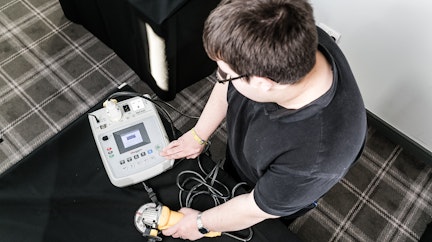Can You Still Make Money Doing PAT Testing in 2025?
A Special Report by Tim James, Director of PAT Testing Expert
Can You Still Make Money Doing PAT Testing in 2025?
For the full document (longer than this brief summary) download the PDF version of this article to read in your own time. (Right-click on the link and then save the article to read in your own time - print it out if you want!)
Short answer: yes — if you do it right!.
You can still make a decent living as a PAT tester in 2025, but you can’t just buy a tester, put up a website, and expect the phone to ring. Like any trade, it takes training, consistency, and professionalism.
This guide explains how to build a profitable PAT testing business the right way — with a focus on simplicity, skill, and effort, not gimmicks.
The State of PAT Testing in 2025
-
UK businesses still need PAT testing to meet safety and insurance requirements.
-
Clients expect competent, trained testers who can provide accurate, traceable records.
Market rates typically range between £1 and £3 per item, depending on job size and location. Anthing lower than this and it's not being done correctly!
-
Some companies chase price — but the profitable ones focus on quality and reliability.
PAT testing remains a steady, recession-proof service. There’s strong demand, but also heavy competition. The difference between success and struggle is how well you know your craft.
Training Is the Key to Profitability
If you want to make money doing PAT testing, the first investment isn’t the tester — it’s training.
-
A trained tester works faster and more accurately.
-
Clients trust qualified professionals, not hobbyists.
-
The HSE requires testing by a “suitably trained and competent person.”
-
Proper training means fewer mistakes and better safety outcomes.
Training pays for itself quickly — it’s what separates serious professionals from the “cheap label-stickers” who give the industry a bad name.
Keep It Simple: Manual Testers + Excel Workflows
You don’t need an expensive automatic tester or cloud software to run a successful PAT business.
A manual PAT tester and a well-designed Excel record system are all you need to stay compliant, efficient, and low-cost.
-
Use a reliable manual tester and keep it calibrated.
-
Create simple Excel templates for test logs and certificates.
-
Back up your records and keep them easy to read.
-
Offer cloud or PDF options only if the client requests them.
This approach keeps your workflow lean and under your control — no unnecessary gadgets or subscription costs.
Pricing Strategy That Works
-
Typical market range: £1–£3 per item
-
Always include a minimum job fee
-
Avoid competing purely on price — focus on reliability and value
-
Charge fairly for travel and admin time
-
Work efficiently by batching similar appliance types
A realistic, transparent pricing model builds trust and profitability over time.
The Problem with Quantity-First Operators
Too many large companies chase numbers instead of safety. Their engineers are given unrealistic targets — hundreds of tests a day — and paid so little per item that cutting corners becomes routine.
Let’s be honest: you can’t properly test 500 appliances in a day. There’s a difference between working efficiently and simply sticking on labels.
This “volume over quality” approach harms clients and the industry alike.
Clients end up with meaningless certificates, unsafe appliances, and false peace of mind.
True professionals — those who take time to inspect, test, and record results properly — stand out immediately.
If you’re frustrated by being undercut by corner-cutters, the answer isn’t to join them — it’s to be better than them.
How to Build a Successful PAT Testing Business
-
Get trained properly — it’s your single biggest competitive edge.
-
Use simple, reliable tools — avoid over-complication.
-
Create professional records — Excel templates and clear certificates.
-
Start local — small businesses, landlords, schools, and clinics value trust.
-
Be efficient but thorough — quality and speed can coexist.
-
Market your professionalism — show your training and reliability in every client interaction.
Summary: You Can Make Money Doing PAT Testing — If You Put In the Work
Yes, you can make good money doing PAT testing in 2025 — but you’ll have to earn it.
You can’t skip the groundwork or rely on low prices. The people who succeed are those who train properly, do the job right, and build long-term relationships with clients who value safety.
The industry doesn’t need more “sticker-slappers.” It needs trained professionals who understand the process and take pride in doing it right.
If you want to be one of them, start by getting trained.
Ready to get started?
Join one of our PAT Testing Training Courses and learn how to test properly, work efficiently, and build a profitable business the right way.
Find a PAT Testing Course near you ›
You might also be interested in...

12 Top Tips for Getting Work for your PAT Testing Business
Advice from my own experience of running a PAT Testing Business over many years.

A Few Ways to Grow Your PAT Testing Business
This information is about growing your business.

PAT Testing Certificate and Record Keeping
Free online support and record keeping.